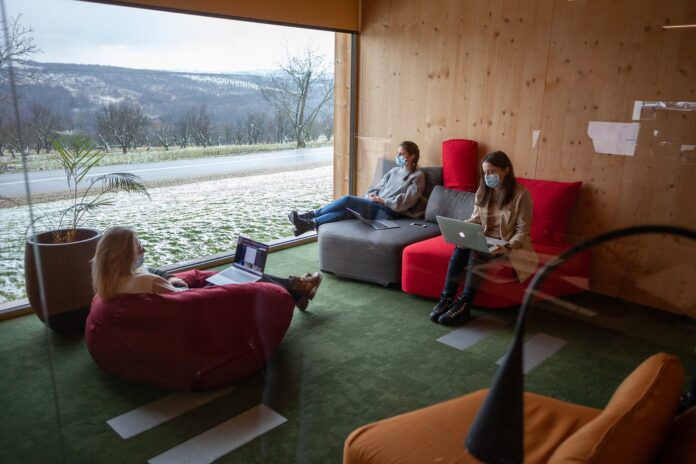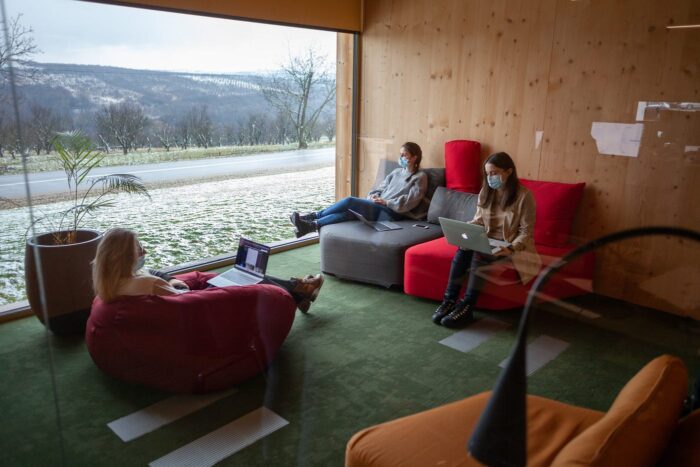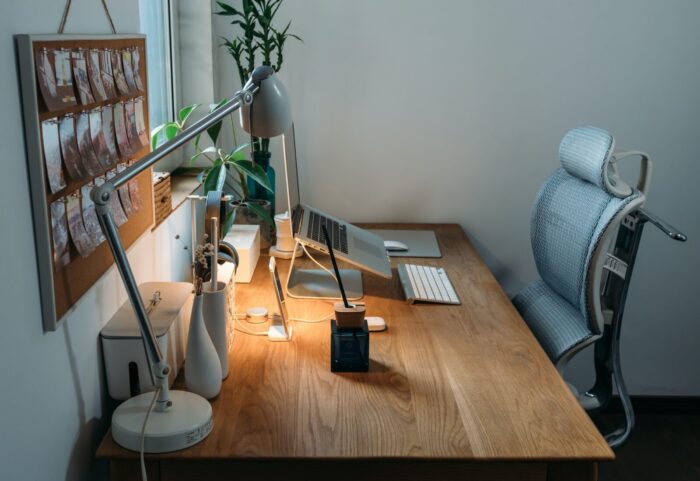
In the continually changing realm of interior design, one principle has emerged as a guiding light – ergonomics. The term “ergonomics” encompasses the science of creating spaces and products that enhance human comfort and performance. When applied to interior design, it results in environments that prioritize not only aesthetics but also the wellbeing of their occupants.
Here, we delve into the vital significance of ergonomic interiors, emphasizing the role of ergonomic furniture, layouts, and features in promoting comfort, health, and overall quality of life.
Understanding Ergonomics in Interior Design
Ergonomics in interior design involves a profound understanding of human physiology, psychology, and behavior, all culminating in spaces that harmonize with the natural movements and needs of the human body. This design approach acknowledges that our physical and mental well-being is profoundly influenced by our surroundings. Therefore, the goal is to optimize comfort, functionality, and efficiency within our living spaces, contributing to a higher quality of life.
Elements of Ergonomic Design

You might be surprised at how many ways you can consider ergonomics and comfort when designing your home. For example, consider the following elements:
Ergonomic Furniture
The cornerstone of ergonomic interior design is the selection of furniture that prioritizes comfort, support, and functionality. Ergonomic chairs, for example, are meticulously crafted to provide proper lumbar support, maintain a neutral posture, and minimize strain on the spine. These chairs often feature adjustable height, armrests, and backrests, allowing users to customize their seating experience for ultimate comfort and reduced fatigue.
Ergonomic furniture extends beyond seating. Ergonomic desks are designed to accommodate various working postures, including sitting and standing. Adjustable workstations allow users to switch between these positions, reducing the negative effects of prolonged sitting. Furthermore, ergonomic design principles apply to other elements of the home, including mattresses. An ergonomic mattress is engineered to ensure proper spinal alignment and pressure relief. A restful night’s sleep on such a mattress leads to improved overall health.
Layouts that Promote Movement and Functionality
Ergonomic interior design also considers the layout of spaces to promote movement and functionality. An open floor plan, for instance, allows for easy navigation and encourages social interaction and more movement within the home. In workspaces, adjustable desks and monitor stands enable users to switch between sitting and standing positions. This flexibility not only enhances comfort but also improves productivity and reduces the risk of musculoskeletal issues associated with sedentary work habits.
Thoughtful placement of furniture and fixtures is another aspect of ergonomic layouts. In kitchens, for example, pull-out shelves and drawers are incorporated to minimize bending and reaching, making daily cooking and meal preparation tasks more ergonomic and convenient.
Calming Colors
The choice of colors within an interior space significantly impacts its ambiance. Ergonomic design often leans towards calming colors, such as soft blues, muted greens, and gentle neutrals. These hues promote relaxation, reduce stress, and contribute to a tranquil atmosphere. In bedrooms and relaxation areas, calming colors create an oasis of serenity, enhancing the overall sense of comfort.
Appropriate Lighting

Ergonomic lighting design balances functionality and comfort. Task lighting provides focused illumination for specific activities, such as reading or working, reducing eye strain and enhancing productivity. Ambient lighting creates a warm and inviting atmosphere, fostering relaxation. In spaces like home offices and living rooms, a thoughtful combination of lighting types ensures both functionality and comfort. Also, utilize natural light wherever possible because, when harnessed effectively, it can reduce eye strain and boost mood.
Temperature Control
Temperature control and ventilation are essential considerations in ergonomic design. Well-insulated homes with efficient heating, ventilation, and air conditioning systems allow occupants to maintain a comfortable temperature year-round. Proper air circulation and ventilation reduce indoor air pollutants, enhance indoor air quality, and contribute to better respiratory health.
If you don’t already have ceiling fans in your home, it’s worth installing them. Ensure you choose a quality ceiling fan with remote from Hunter Fan or other credible suppliers, as high-set appliances can be operated by people of diverse needs in the home, including the elderly or those with disabilities.
Non-Slip Flooring
In the pursuit of ergonomic design, non-slip flooring is a crucial consideration, too, especially in spaces prone to moisture, such as bathrooms and kitchens. Non-slip flooring materials, like textured tiles or slip-resistant coatings, offer a safer walking surface, reducing the risk of slips and falls.
Universal Design Principles
Universal design principles ensure that interior spaces are accessible and usable by individuals of all abilities and ages. It involves creating environments that accommodate diverse needs, such as wider doorways for wheelchair access, lever handles for easy gripping, and clear pathways for mobility aids. These principles promote inclusivity, allowing everyone to navigate and enjoy the space comfortably, ultimately enhancing the overall quality of life for all occupants.
Flexibility and Adaptability
Flexibility and adaptability in interior design focus on creating spaces that can easily evolve with changing needs and preferences. Furniture and layouts should be versatile, allowing for effortless reconfiguration as requirements shift over time. Modular furniture, adjustable shelving, and open floor plans are examples of design elements that enable adaptability, ensuring that interiors remain functional and efficient as lifestyles and needs evolve.
Acoustic Comfort

Acoustic comfort is vital for a serene and functional interior space. Proper sound insulation, acoustic panels, and noise-reducing materials help control unwanted sound, ensuring a peaceful environment. This is particularly important in offices, bedrooms, and entertainment areas. Effective acoustic design enhances concentration, communication, and relaxation, contributing significantly to the overall comfort and wellbeing of occupants.
Sustainable Design Practices
Sustainable design practices in interior design prioritize environmentally friendly materials and energy-efficient solutions. This includes using recycled and renewable materials, reducing waste, and selecting energy-efficient lighting and appliances. Sustainable design not only benefits the environment but also enhances indoor air quality and occupant health. It creates spaces that promote eco-conscious living while maintaining comfort and aesthetics, fostering a sustainable and healthy lifestyle.
Ergonomic interior design is not merely about aesthetics; it’s a holistic approach that prioritizes the wellbeing of occupants. By considering the factors detailed above, interior designers and homeowners alike can create spaces that promote physical and mental health and happiness. In an era where our surroundings play an increasingly vital role in our lives, embracing ergonomic design is a profound step towards creating a more comfortable and healthy living environment.
















